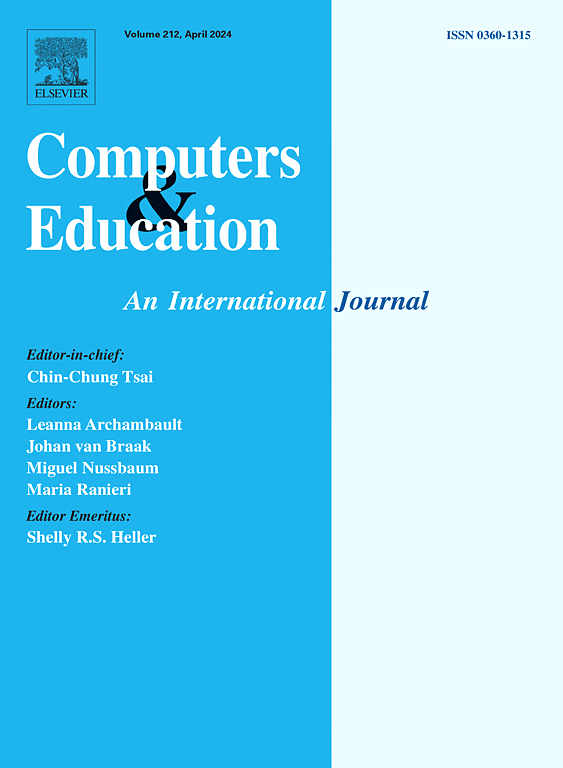"你真的应该边阅读边聊天吗?"屏幕多任务处理和文字不流畅对综合理解的影响
IF 10.5
1区 教育学
Q1 COMPUTER SCIENCE, INTERDISCIPLINARY APPLICATIONS
引用次数: 0
摘要
学生在授课或做学术作业时进行多任务处理是一种常见的活动,可能会对学习成绩产生负面影响。因此,有必要研究在什么条件下可以减少这种负面影响。本研究汇集了两个不同的研究方向,以考察屏幕多任务和文字不流畅的影响。多任务要求学生在阅读过程中阅读和回复社交媒体信息。文字不流畅是指文字难读与易读的感知形式。我们的研究对象包括 208 名大学生,通过 2 x 2 受试者间设计,将他们随机分配到四个条件之一。参与者阅读两篇关于阳光照射和健康的双重立场的文章。根据所分配的条件,他们可以阅读感知流畅或不流畅的文本,并且可以在阅读时间歇性地接收或不接收屏幕上的社交媒体信息。作为结果变量,我们测量了参与者对认知负荷的感知、对文本的综合理解以及对文本理解的元认知校准。我们还控制了先前知识、阅读理解能力、工作记忆和认知灵活性等个体差异可能造成的影响。结果表明,多任务处理对双重位置文本的综合理解有负面影响,非多任务处理者的表现优于多任务处理者。认知负荷感和元认知校准不受多任务处理的影响。对于任何结果变量,都没有观察到流畅性的影响,多任务和流畅性的交互影响在统计学上也不显著。本文讨论了研究的局限性和未来研究的方向。本文章由计算机程序翻译,如有差异,请以英文原文为准。
“Should you really chat while reading?” effects of on-screen multitasking and text disfluency on integrated understanding
Students' multitasking during lectures or academic assignments is a common activity that may have negative effects on performance. It is therefore relevant to investigate under what conditions such negative effects can be reduced. The current study brought together two separate lines of research to examine the effects of on-screen multitasking and text disfluency. Multitasking required students to read and respond to social media messages during reading. Text disfluency was perceptual in the form of harder-to-read versus easy-to-read text. We included 208 university students, who were randomly assigned to one of the four conditions resulting from a 2 x 2 between-subjects design. Participants read two dual-positional texts on sun exposure and health. Dependent on the assigned condition, they could read perceptually fluent or disfluent texts, and they could intermittently receive, or not receive, on-screen social media messages while reading. As outcome variables, we measured participants’ perception of cognitive load, integrated text understanding, and metacognitive calibration of text understanding. We also controlled the possible contributions of the individual differences of prior knowledge, reading comprehension skills, working memory, and cognitive flexibility. Results showed a negative effect of multitasking on the integrated understanding of the dual positional texts with non-multitaskers outperforming multitaskers. Perception of cognitive load and metacognitive calibration were not affected by multitasking. No impact of disfluency was observed for any of the outcome variables, and the interactive effect of multitasking and disfluency was also not statistically significant. Limitations and directions for future research are discussed.
求助全文
通过发布文献求助,成功后即可免费获取论文全文。
去求助
来源期刊

Computers & Education
工程技术-计算机:跨学科应用
CiteScore
27.10
自引率
5.80%
发文量
204
审稿时长
42 days
期刊介绍:
Computers & Education seeks to advance understanding of how digital technology can improve education by publishing high-quality research that expands both theory and practice. The journal welcomes research papers exploring the pedagogical applications of digital technology, with a focus broad enough to appeal to the wider education community.
 求助内容:
求助内容: 应助结果提醒方式:
应助结果提醒方式:


